Liriomyza sativae
What to look for
Leaves with long, white meandering trails (mines) on the leaf surface.
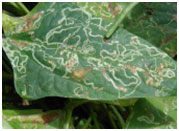
What you can do
- Do not move plants, plant material or fresh vegetables out of the Torres Strait Protected Zone to the Torres Strait Permanent Biosecurity Monitoring Zone, or from either zone to mainland Australia without a permit and an inspection by a departmental biosecurity officer.
- Report any signs of vegetable leafminer to the department by phone on +61 7 4241 7800 or email NAQS.
Profile
Vegetable leafminer is a tiny black and yellow fly that attacks many different vegetables as well as ornamentals and cotton plants. The fly lays eggs into the leaves and larvae make tunnels inside the leaf as they feed.
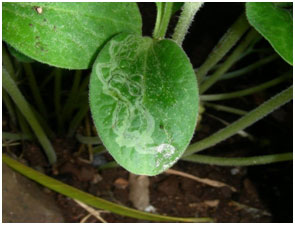
Vegetable leafminer damage on a pumpkin plant
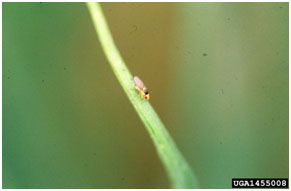
Image shows an adult leaf miner that grows to 2 mm long
Identification
Leafminer damage is a meandering track under the surface of the leaf. The track is white, often with an obvious trail of dark waste material inside.
Distribution
North, Central America and Caribbean, South America, Africa, Asia, Oceania and Australia (Torres Strait and Northern Peninsula Area of Cape York).
Threat
This pest is a significant threat to our cotton and vegetable industries, as well as our home gardens.
Keep a Top Watch!
Plants, plant material and vegetables are prohibited from entering Australia or moving south from Torres Strait without a permit from the department. Alert the department if you see tracks in the leaves of castor oil plants or vegetables such as tomatoes, pumpkins, lettuce or melons.
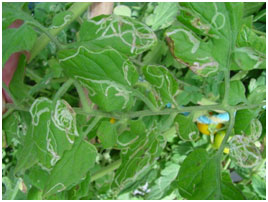
Vegetable leafminer damage on a tomato plant
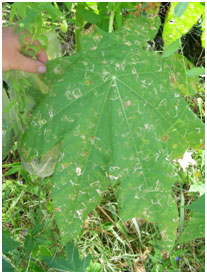
Vegetable leafminer damage on a castor oil plant
Report white, wavy tracks in the leaves of tomatoes and other vegetables.

